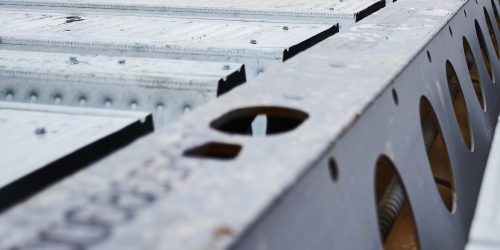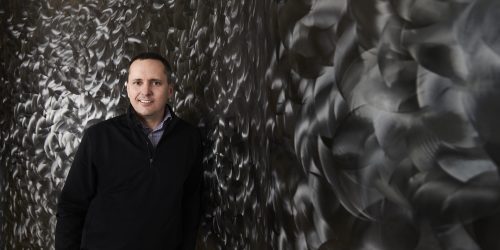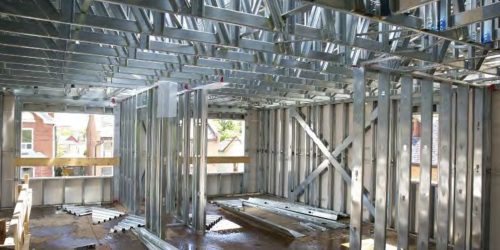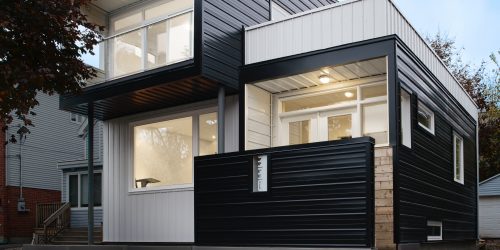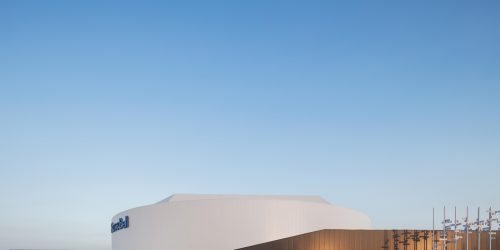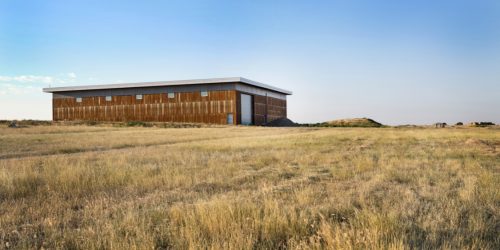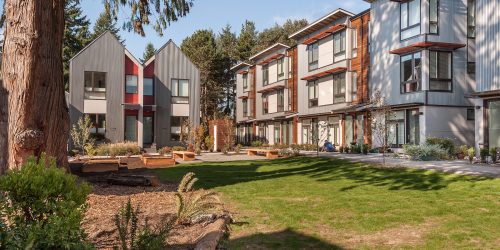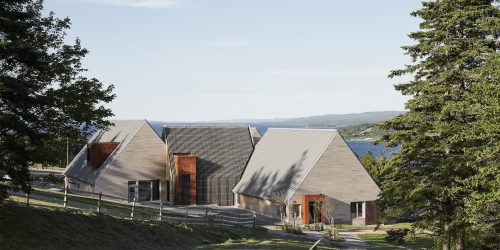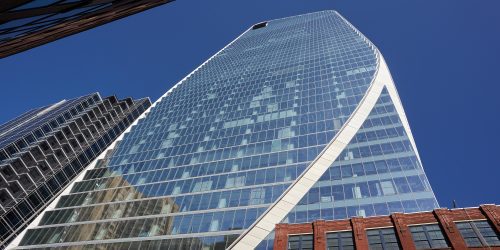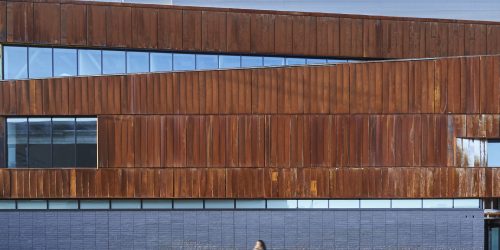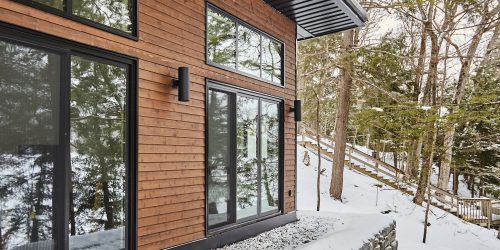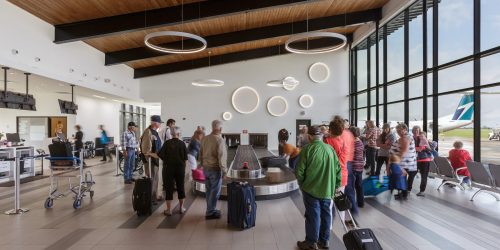It’s What’s on the Inside that Counts
Structural steel serves as support for Toronto’s newest skyscraper
Story: Ian VanDuzer
Photography: Daniel Banko (Last image, courtesy of Gage Metal Cladding Ltd.)
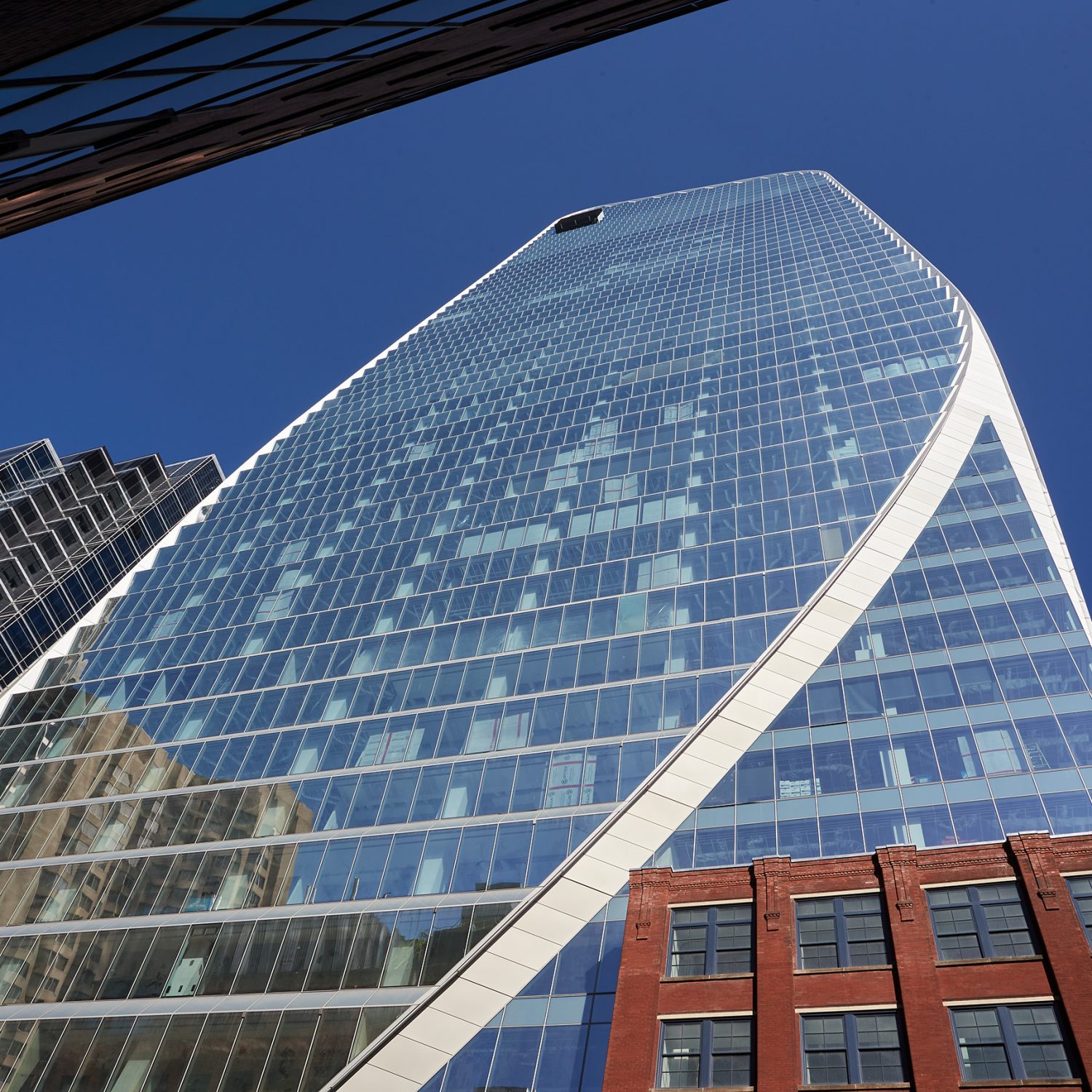
Tim Verhey has a problem with Steel Design Magazine.
“You write too much about exterior steel,” the Executive Vice President, Operations and Engineering of the Walters Group jokes, shaking my hand before sitting down for our interview. “A lot of light gauge steel stuff. It’s interesting, but what about structural steel?”
What about structural steel, indeed? With all the incredible leaps forward in technologies and usages, exterior steel applications have been a major focus of Steel Design. Insulated panels, unique finishes, building envelopes: these are newer applications for steel that are gaining wider prominence as builders and developers seek to create a new world for us to live in. It’s fascinating to see how steel is now being used compared to twenty years ago, discovering the new contexts this material can create.
But we shouldn’t forget that heavy gauge, structural steel serves as the skeleton for most of our giant, beautiful buildings. This was the original intention for steel in construction, after all: to provide a strong skeleton to support tall, towering buildings.
It’s no surprise that Verhey is passionate about structural, heavy gauge steel. It’s more than a job for him – the Walters Group was founded by his grandfather, and he is generation three of a four-generation family business. It’s that passion and history that made including the Hamilton-based steel fabricator a no-brainer when Cadillac Fairview was looking for steel for its new skyscraper in Toronto.
160 Front Street West
Standing at a hair under 240 meters tall, at 46 storeys, 160 Front Street West is the newest skyscraper in Toronto’s core. Such a brand-new building in such an accessible and lucrative part of town – just steps from the CN Tower and Union Station – should attract some top tenants, and 160 Front Street West is no exception: among its first occupiers are TD Bank and the Ontario Teachers’ Pension Plan.
The building has no trouble standing out: being slightly south-west of the financial district, 160 Front Street West towers above its neighbours, lower commercial buildings and new, cookie-cutter box condos. In that respect, 160 Front is magnificent: the building integrates a historical façade at street level and then swings out over empty space before curving back in to an elegant, bowed top. It’s a sleek design of gleaming glass and steel: a worthy addition to Toronto’s changing skyline.
Of course, that’s just what the building looks like. And while there are some stunning architectural details, at its core 160 Front is a standard high-rise building, complete with a concrete core and structural steel supports.
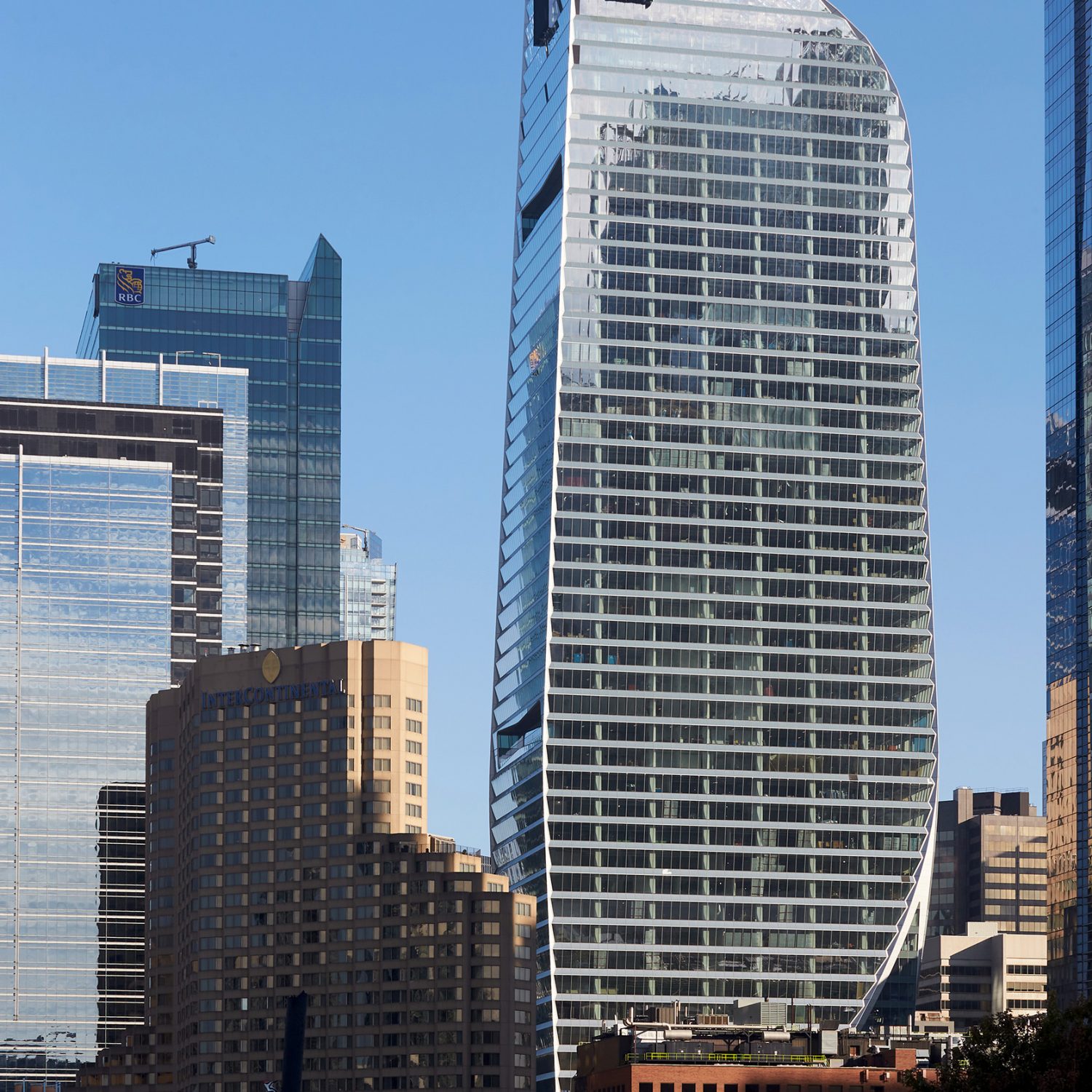
Building Tall
“And here is the value of structural steel,” Verhey says. “For a high-rise building, you need to use more columns,” he explains. That could mean more concrete, which adds lots of reliable strength to the design, but there’s a problem with that: “That doesn’t work with the developer’s pro forma. They want to maximize column-free areas to increase space for their tenants.”
The solution is to build a concrete core to support the center of the building and then marry that backbone with perimeter columns made of structural steel. As Verhey explains, you can’t get rid of the columns, but you can limit their impact on the interior. “Steel keeps columns nice and compact,” Verhey says. “It allows you to get those large, column-free spaces, and you can get the height, too.”
Overall, more than 12,000 tons of structural steel was used in the construction of 160 Front, with the majority of that coming from the Walters Group’s fabrication mills in Hamilton and Princeton, Ontario, and produced by ArcelorMittal.
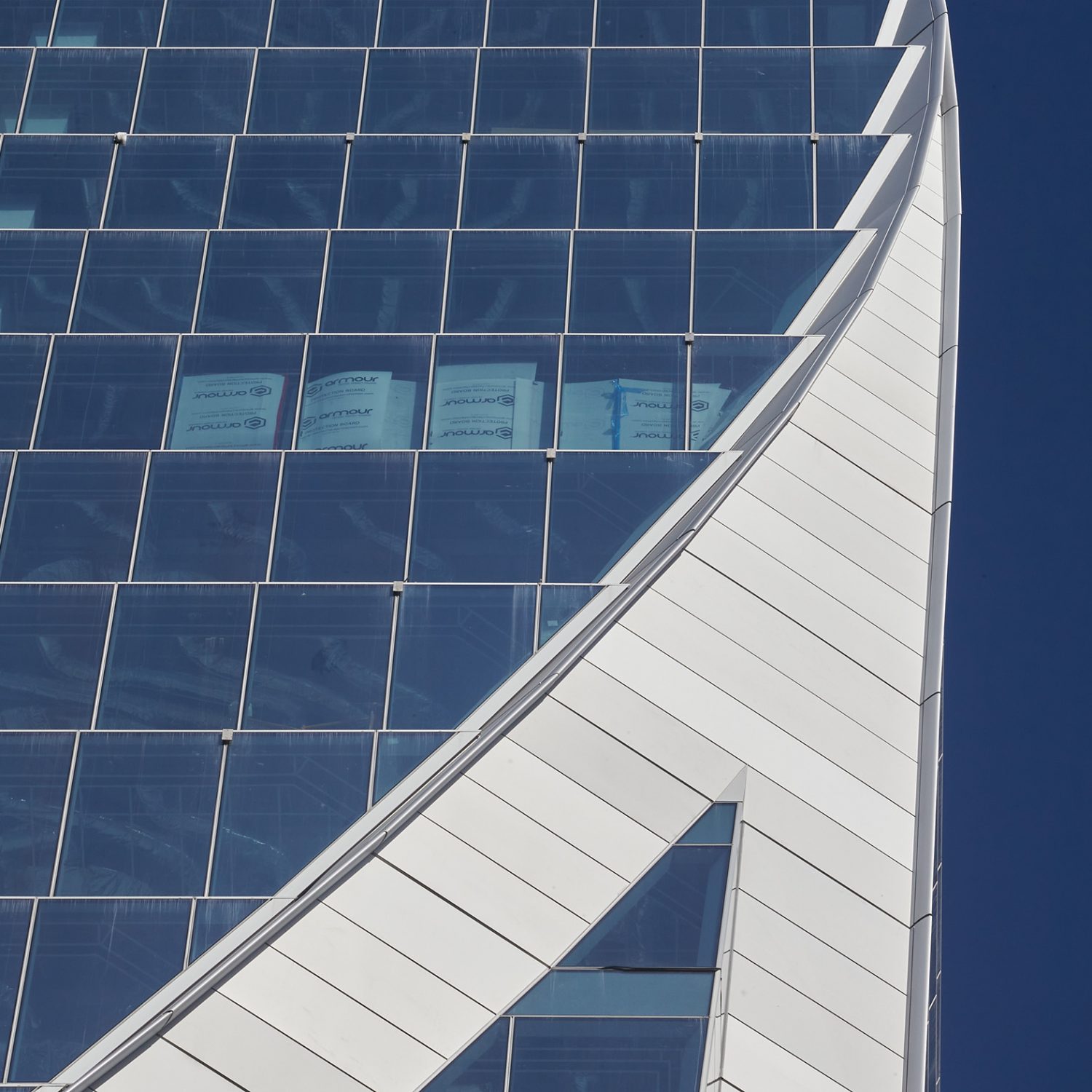
They Did the Math
It’s difficult to comprehend just how much math goes into the construction of any modern building, never mind a high-rise skyscraper. We know that math is essential to the design of any building, but the incredible amount of thought that every aspect of design requires can set your head spinning.
It’s those sorts of challenges that steel fabricators and erectors – like Walters Group – and structural engineers – like RJC Engineers, who also worked on 160 Front Street West – need to find answers to before construction can begin.
Take the height of the building itself, for example. When a building is so tall, gravity is a major factor in construction as the Earth’s natural pull will cause the building to compress and shrink itself over time. That compression needs to be taken into account when planning everything: lengths of material, floor sizes, ceiling height, attachment plates, even down to the type of joints used.
To make matters even more complicated, different materials react in different ways to gravity. Consider all of the factors, and you have the potential for a major headache on your hands – especially when you’re trying to nail tolerances of fractions of an inch.
“This has got me on an interesting tangent that’s super nerdy that nobody will ever know,” laughs Kevin MacLean, who was the project lead with RJC. He says they used higher-grade steel in the columns, which meant less material but also means that the columns would squish more. “Which is fine,” MacLean adds. “Provided you deal with it.”
“It’s called superelevation,” Verhey explains. “When we’re building these towers, we build the steel taller than the concrete to the point that at the top of that tower, it might be 4 inches taller, but over the life of the construction cycle, the steel will compress downwards.”
That’s just one solution – one giant set of calculations – of literally thousands of different challenges, from wind effects to earthquake risks to temperature and sunlight and more. And all these problems are made even more complex when considering unique shapes and building features – of which 160 Front has a few.
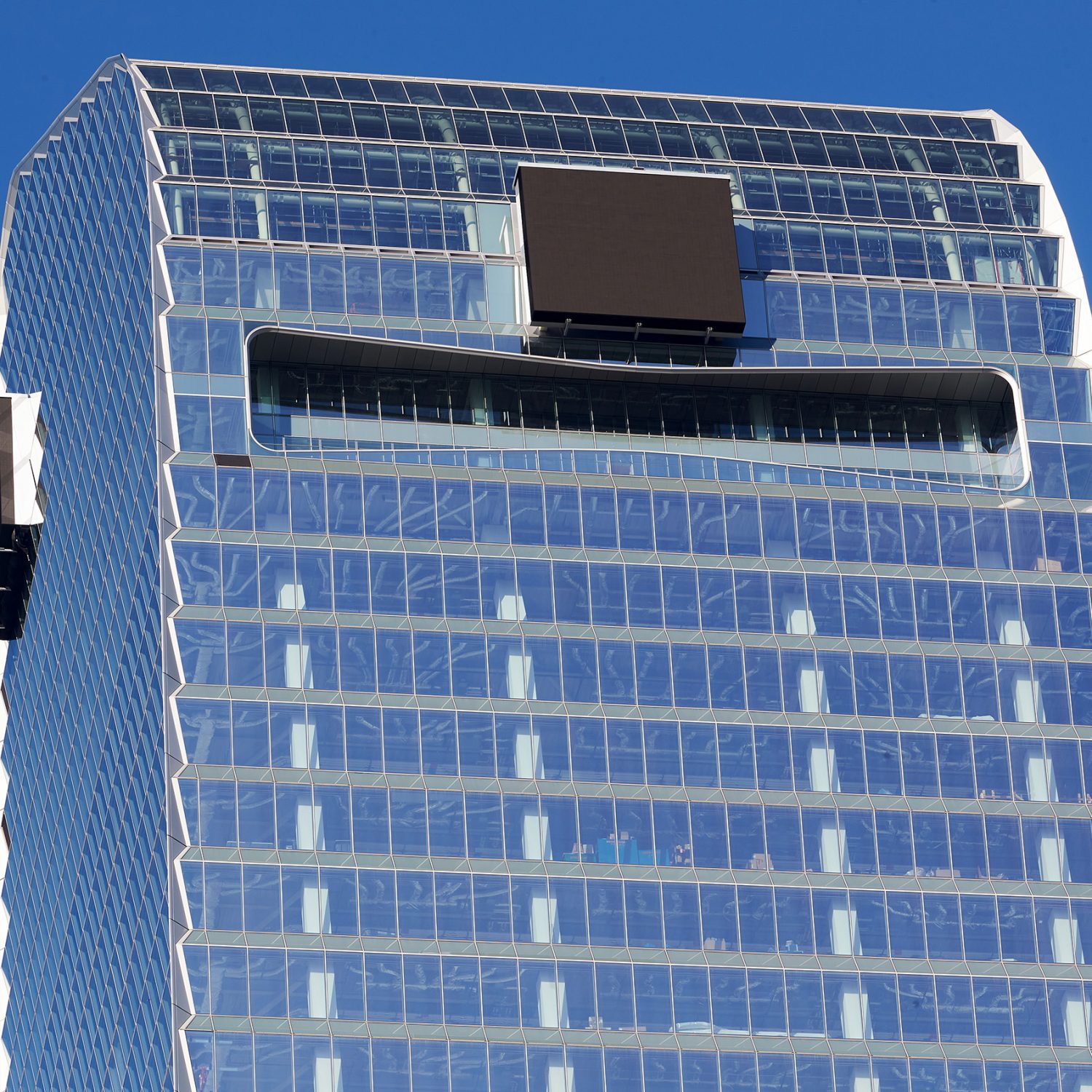
Not-So-Easy In-And-Out.
One of the unique features of 160 Front are the inlets: cut-out divots on the sides of the building. Architecturally, they add interesting shapes to the façade, breaking up a flat surface. But structurally, the inlets posed interesting challenges for RJC and Walters Group to tackle.
Simply put, architects create plans, and then structural engineers have to figure out how those plans will actually work. “Yeah, that sounds about right,” laughs MacLean.
So, when it came to the inlets, MacLean and Verhey’s teams had to figure out the complex math of mixing horizontal and vertical forces. “The inlets actually interrupt the tower column,” MacLean explains. “So, we had to work with Walters on some very complicated, very heavy connections to stabilize those inclined columns.”
Interrupting the tower column means that vertical forces suddenly became horizontal: essentially, the main supports for the building had to zig-zag around the designed openings. “We have a series of multiple floors twice on the building – on both sides – where we have some heavy atypical framing,” MacLean says, memories of doing the math visibly flashing on his face. “We had to attach it all to the concrete core so that the whole thing doesn’t pull away from the building.
“And those connections are... challenging.”
In contrast to MacLean’s stoic expression, Verhey beamed as he described the solution. “We came up with a really clever concept utilizing a simple pin,” he says giddily. “So, we have simple pin joints to deal with these massive loads through this complex interplay of steel, shortening concrete creep on the core. And it was, at the end of the day, very simple. But it took a lot of brain power between ourselves and RJC to figure out how to do that.
“Simplicity is often the best, but often simplicity is elusive. It takes a while to get there.”
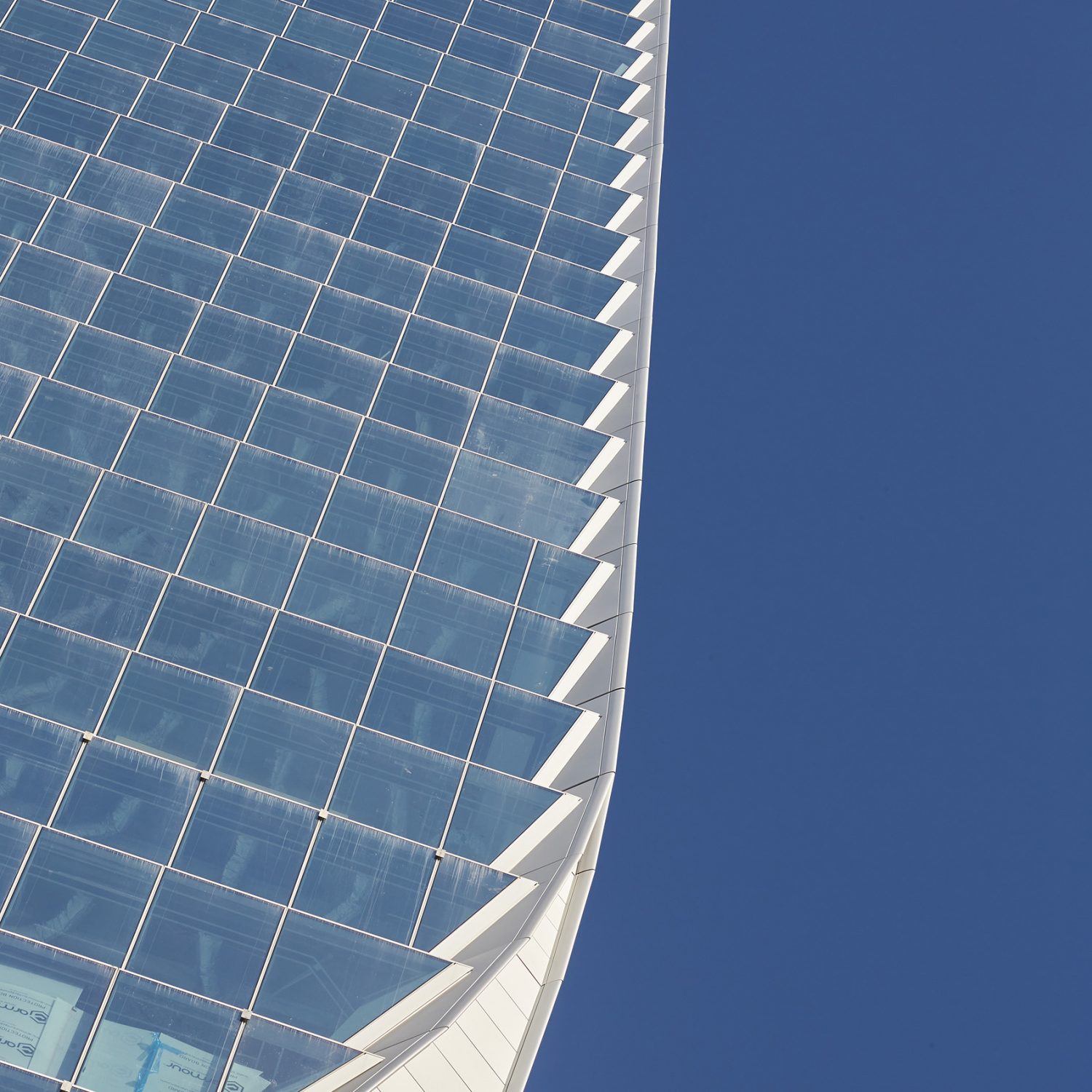
Kings on the Corner
Another challenge was in the swooping silhouette of the building itself. “Two sides of the building are sort of symmetrical,” MacLean says, holding his hands up. “The other sort of narrower sides aren’t exactly symmetrical, and then that basically means that all four corners are effectively kind of different.”
Instead of designing four unique column structures for the corners, MacLean’s solution was to simply... not do corner columns. “What we did was put the columns away from each corner,” MacLean explains. “This is actually a very significant thing. We alleviated this geometric complexity. And the architectural benefit is that you now have corner offices with no columns in them. It’s beautiful, usable space.”
And structurally, pulling the columns away from the corners of the building meant avoiding a whole set of issues dealing with curves. “If you ever do crown molding and the compound miter thing, it’s like it never matches up properly,” MacLean sketches the shapes with his hands. “It’s just, you know, horrendously geometrically complicated.”
Those complexities can add up to big headaches when stretched out over 40+ storeys, like in 160 Front. “I think Walters is pretty glad we did that,” MacLean laughs.
In the end – at least as far as RJC and Walters Group are concerned – it all comes back to structural steel, without which buildings like 160 Front Street West would not be possible.
So, while not as flashy as colourful steel panels or exterior envelopes that can go up in weeks, it’s worth paying structural steel – and the math that goes along with it – the attention it deserves.
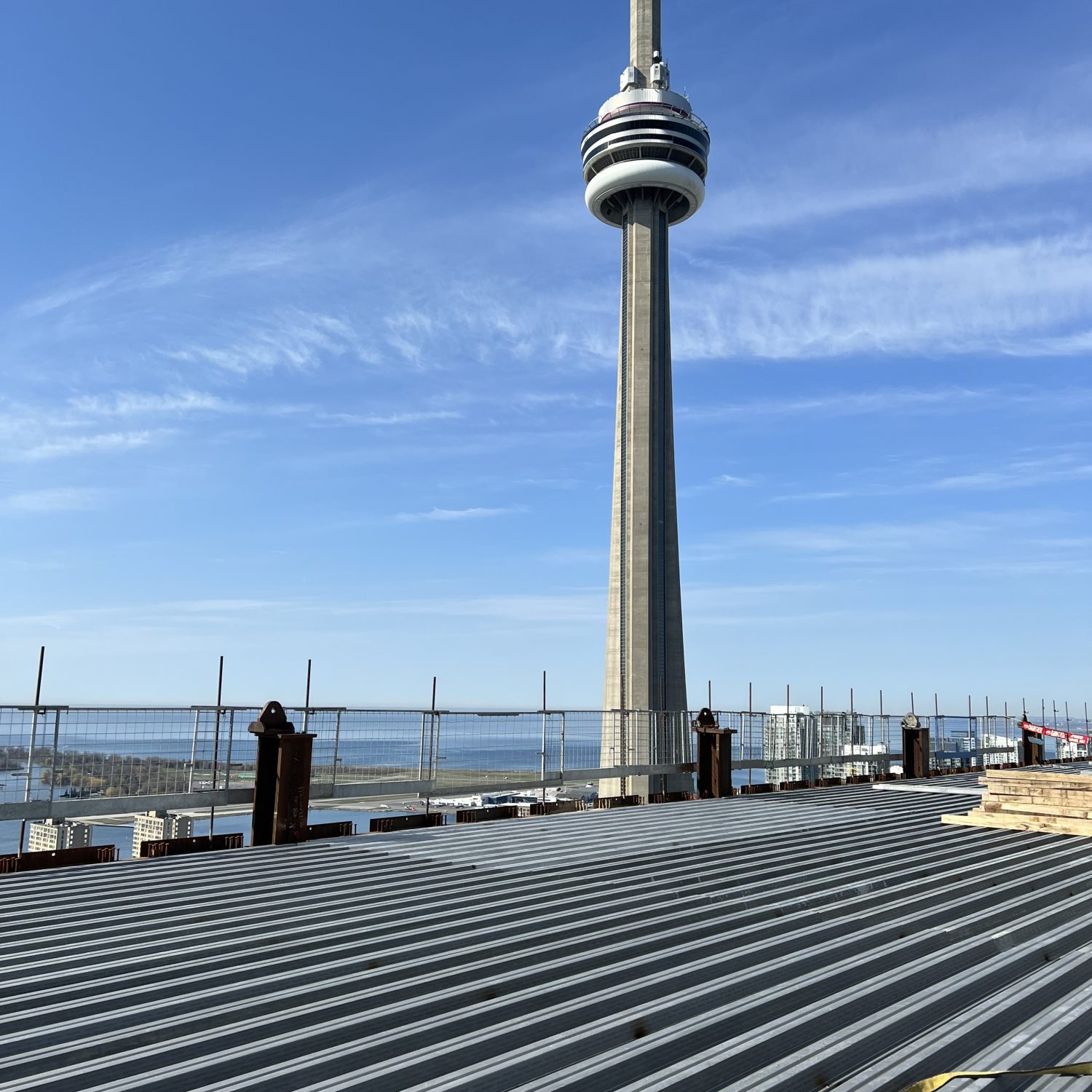
From the Floor Up.
While the height of 160 Front Street West encourages you to look up, you may also be interested in what’s down below your feet. Underneath the concrete floor of each storey lies sheet after sheet of steel floor decking - 1,400 tonnes of it, in fact!
“It’s a lot of steel!” laughs Jamie Robertson, CEO of Agway Metals, who supplied the vast majority of the composite decking material. “It’s about 1.2 million square feet of decking across the 46 storeys.”
A quick chat with Robertson just showcases how special even the most hidden and “mundane” parts of modern skyscrapers are. Like everything else, composite decking has been optimized for weight, efficiency, speed, and cost.
The steel part of the composite decking - the part Agway supplied - forms a metal sheet that is welded to the structural steel.
Not only does the decking provide strength to the overall tower, but the non-porous nature of steel means that concrete can be poured without additional framing and molding. “You can skip the plywood forms, the temporary forms,” Robertson explains. “Just pour the concrete right on top!
“The practice is standard, but the specifications are unique.”
There’s another benefit to the steel sheets, too. Just as they can hold concrete, the steel sheets also serve as protective barriers from rain and snow coming from above. “What we usually do is sort of one-step-forward-two-steps-back construction,” Robertson says. “We’ll put in the third floor first, and then that creates a cover while we work on floors one and two. Then we skip up to floor six before working on four and five... you get the idea.”
Just like Walters used a simple pin to solve a litany of structural issues, composite steel decking - rolled out of cold-form steel - proves that sometimes the simplest solutions are also the best and most practical.
For 160 Front Street West, the amount and different kinds of steel all around the building proves that there’s more to Toronto’s newest skyscraper than meets the eye - and how much of modern construction is a complex dance to build quickly and efficiently.
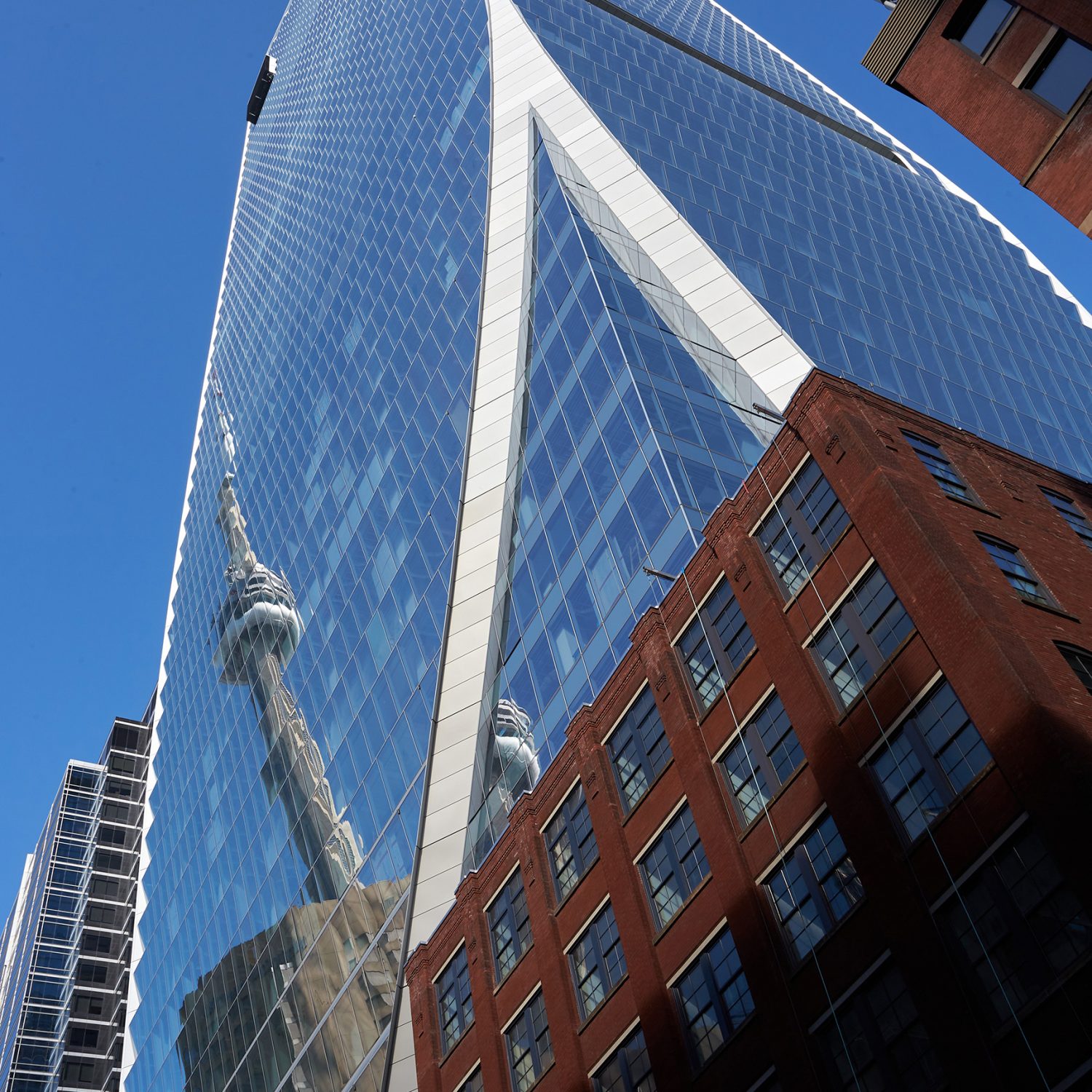
Specifications
BUILDING OWNER/PROJECT COMMISSIONER:
Cadillac Fairview Corporation Ltd // cadillacfairview.com
ARCHITECT:
Adrian Smith + Gordon Gill Architecture // smithgill.com
B+H Architects // bharchitects.com
ENGINEERS:
RJC Engineers // rjc.ca
GENERAL CONTRACTOR:
PCL Construction Inc. // pcl.com
SUPPLIERS, FABRICATORS, INSTALLERS:
Agway Metals // agwaymetals.com
Walters Group Inc. // waltersgroupinc.com
PRODUCTS:
ArcelorMittal’s High grade (A913-70 grade) (aka HISTAR®)
